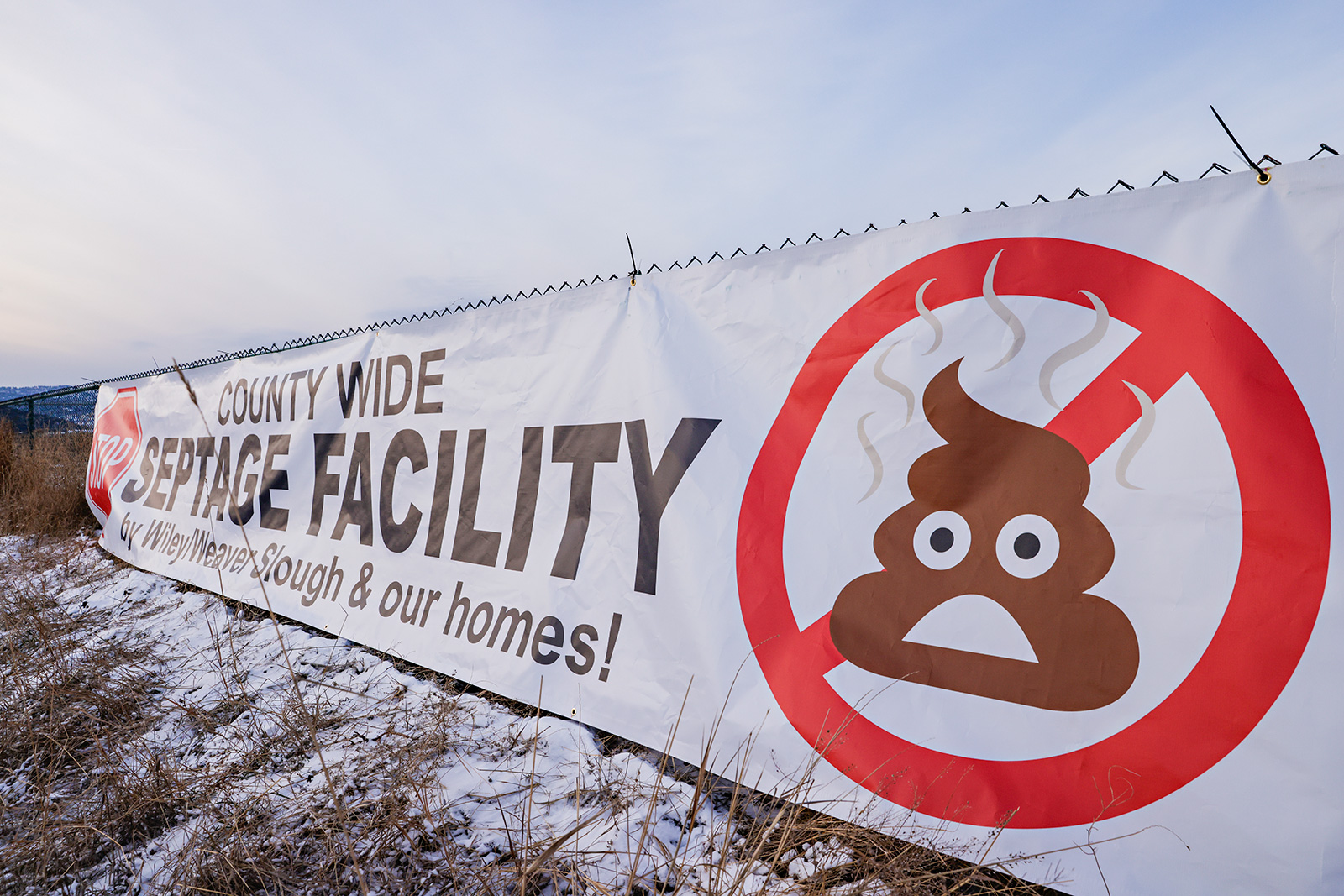Opposition to Proposed Septage Facility Spills into Public Forums
Flathead County Commissioners hosted the meeting to educate residents on the regional septage site’s proposed Lower Valley location
By Micah Drew
Flathead County held two informational sessions on Dec. 1 to educate the public on the need for a regional septage facility and bring a greater degree of transparency to the process that led the county commission to sign a buy-sell agreement for a lower valley property under consideration.
Bill Buxton, a representative of HDR Engineering, the firm in charge of designing the treatment plant, detailed the need for the new facility and summarized the lengthy deliberations that went into determining its best location.
According to the Flathead County Health Department, there are roughly 30,000 septic tanks in Flathead County with nearly 700 new permits issued in 2022 alone. On average, between 20,000 and 40,000 gallons of septage is pumped from the tanks each day, while the number of disposal sites are at a premium.
According to Buxton, the health department last year reported receiving calls almost every day related to a lack of disposal sites, including from porta potty companies that were unable to find waste haulers with contracts that allowed for increased disposal. The local municipal wastewater treatment plants have stringent limits on the amount of waste they can accept from outside municipal limits. In addition, Glacier Gold, a company that recycles biosolid waste into compost, has hit capacity.
The other primary method for disposing county septage waste is through land application, a process that includes injecting untreated septage into soil. Over the years, the amount of local farmland which accepts county waste for land application has decreased.
“We’ve been having problems with land availability dating back to 2008,” Buxton said, adding that discussion between HDR, the county commissioners and the health department had been ongoing for a decade.
Buxton outlined the considerations for a regional septage facility, including easy access to highways, property size, connection to a public sewer and a centralized location within the county.
Of the half-dozen sites that meet the criteria, a 37-acre property at 305 Wylie Dike Road in the lower valley is considered the top prospect. The property has easy access to two highways, ties into the Lakeside Water and Sewer District to dispose of liquid waste and is located near the district’s wastewater treatment lagoons. On Oct. 21, the county commissioners approved a buy-sell agreement with an intent to purchase the property for $1.5 million using money from a 2021 ARPA grant.
HDR Engineering is designing the facility based on 20-year growth projections and would be able to treat roughly 5 million gallons of waste annually.

The county’s plan for the facility has been met with opposition from residents of the Lower Valley concerned with the prospect of diminishing property values, odors and proximity to Wiley Slough and the Flathead River.
“This is some of the last area we have that is an example of what the Flathead Valley was like in the 1800s,” said Kalispell resident Arne Boveng. “I think you’re way off target with this site.”
Buxton showed examples of similar septage sites in Idaho and Montana that abut residential neighborhoods, explaining that odors are minimal and the visual impact can be mitigated. He also pointed to the Bigfork Wastewater Treatment Plant as an example of a “great neighbor,” including similar processes for treatment.
“What I’m hearing is everybody else in the valley is rejecting this,” said Dean Robbins, who owns property adjacent to the proposed land. “As a neighborhood where 100% of the neighbors reject this, do we have a right to do so?”
Other public comments at the two meetings raised questions over the proximity to the floodplain, use of nearby roads and the cost, but not all comments were in opposition.
Mark Brewer, a farmer in West Valley is one of the few farmers who still allowed septage dumping on his property. He said that, in addition to the limited acreage no longer meeting the demands of septage pumpers, there is an increase in complaints from locals.
“We follow [Department of Environmental Quality] regulations, and I never had neighbors complain in the past. Now I have a number of neighbors around and we do get complaints,” Brewer said. “Land application of septage really is not a good way to do it. Odor control is very difficult — it’s just a fact of life when dealing with septage. This facility needs to go on.”
Representatives from the Evergreen Water and Sewer District, the Montana DEQ, the Flathead Basin Commission and the City of Columbia Falls either spoke in person or submitted comments in favor of the new facility, calling it an “absolute imperative.”
Under the presented timeline, an appraisal of the property will be completed this week, followed by a geotechnical survey, environmental study and business plan in December. According to the buy-sell plan the county made for the property, the final sale is scheduled for closure on Jan. 13, 2023. The facility design would be finalized in 2023 with construction projected to begin in 2024.
The full presentation can be viewed online at https://flathead.mt.gov/department-directory/health/environmental-health/septage-treatment. Comments or questions can be directed to the county commissioners by visiting https://flathead.mt.gov/department-directory/commissioners-office.